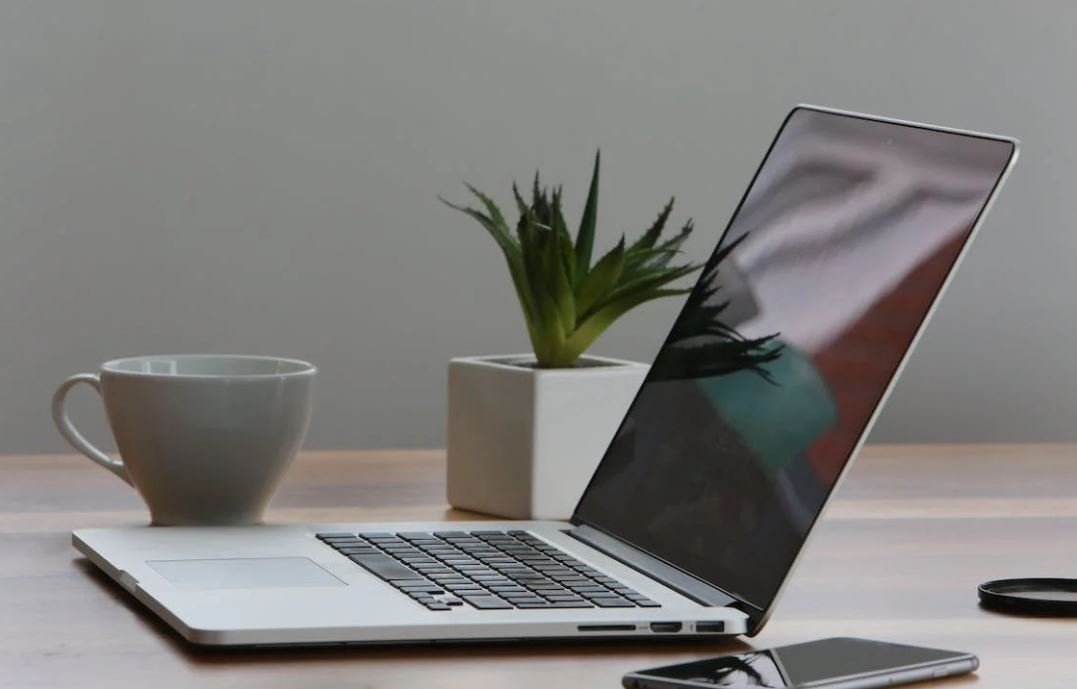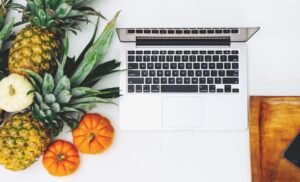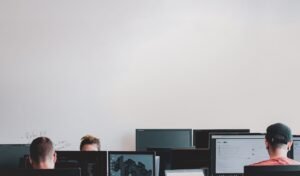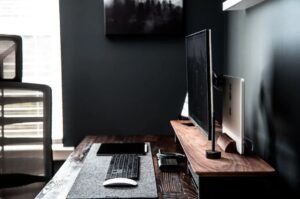AI Artist Rights
Artificial Intelligence (AI) has been transforming different industries and art is no exception. With advancements in AI technology, AI-generated artwork is becoming more prevalent in the art world. However, this raises the question of AI artist rights and ownership. Who owns the art created by AI? Are AI-generated artworks protected by copyright laws? This article explores the legal and ethical implications surrounding AI artist rights.
Key Takeaways:
- AI-generated artwork poses new challenges and questions regarding artist rights and ownership.
- The ownership of AI-generated artworks is still a grey area, with no clear legal framework.
- Copyright laws may not adequately protect AI-generated artworks, as AI lacks the legal status of a person or a traditional artist.
- Artificially Intelligent art may bring about a redefinition of artistic authorship.
When it comes to AI-generated artworks, the issue of ownership becomes complex. Traditional copyright laws were developed to protect human creations, but they do not anticipate the involvement of AI. As AI is not recognized as a legal person, the concept of AI artist rights becomes uncertain and could lead to potential legal disputes. The lack of clear guidelines surrounding AI-generated artwork ownership creates a need for new legislation to address this issue.
Table 1 provides an overview of the legal challenges surrounding AI artist rights:
| Legal Challenges | Solution |
|---|---|
| Lack of legal recognition of AI | New legislation specifically addressing AI-generated artworks |
| Unclear distinction between human and AI creations | Establish criteria to determine the level of AI involvement in artwork creation |
| Determining ownership and rights | Create a framework for assigning ownership and rights to AI-generated artworks |
*Interesting fact: The world’s first AI-generated artwork sold at an auction for $432,500 in 2018.
As AI-generated artworks gain popularity, questions arise about how to determine the artistic authorship. Traditional artistic authorship is tied to the intentions and creativity of a human artist. However, AI is not driven by human intentions but rather by complex algorithms. This leads to a redefinition of authorship, where the role of the human artist may transition into that of a curator or facilitator.
Table 2 demonstrates the evolving concept of authorship in AI-generated artworks:
| Traditional Authorship | AI-Generated Authorship |
|---|---|
| Human artist creates the artwork | AI algorithm creates the artwork |
| Author has full control over the creative process | AI algorithm generates artwork autonomously |
| Artist’s intentions shape the artwork | AI algorithm uses patterns and data to generate the artwork |
While AI-generated artworks can be innovative and captivating, they also raise concerns about plagiarism. AI algorithms have the ability to learn and replicate existing artistic styles, potentially leading to the creation of artworks that closely resemble those of human artists. This blurring of lines between originality and imitation poses challenges to the protection of artists’ rights and the authenticity of artwork.
*Interesting fact: In 2020, an AI-generated portrait sold for $432,500, raising questions about the value of AI art and the importance of artist recognition.
Table 3 highlights the challenges associated with the authenticity of AI-generated artworks:
| Challenges | Potential Solutions |
|---|---|
| Difficulty in determining the originality of AI-generated artworks | Utilize blockchain technology for provenance and authentication |
| Potential for AI to replicate existing artistic styles | Educate the public about AI-generated art to promote understanding and recognition |
| Risk of unauthorized use or commercial exploitation of AI-generated artworks | Develop digital rights management systems for AI-generated art |
As AI becomes more integrated into the art world, it is crucial to address the legal and ethical challenges surrounding AI artist rights. Clear legislation and guidelines are needed to establish ownership, define authorship, and protect the authenticity of AI-generated artworks. By addressing these concerns, society can embrace the benefits of AI while ensuring fairness and respect for artists.

Common Misconceptions
Misconception 1: AI Artists aren’t worthy of copyright protection
One common misconception around AI artist rights is that the artworks created by AI are not worthy of copyright protection. However, this is not true. Like any other creative work, AI-generated art is the product of human intervention, talent, and effort. AI algorithms are tools used by artists to create unique and original pieces. Therefore, AI artists should be granted the same copyright protection as traditional artists.
- AI-generated art involves creative input and manipulation from humans.
- AI algorithms are just tools used by artists, similar to paintbrushes or cameras.
- Copyright protection ensures AI artists can benefit from their creations and encourages creativity.
Misconception 2: AI artists will replace human artists
Another misconception is the fear that AI artists will completely replace human artists in the future. While AI technology has advanced significantly in recent years, it should be seen as a complementary tool rather than a complete replacement for human creativity. AI algorithms can assist and enhance artistic processes, but they lack the emotional depth, intuition, and unique perspective that humans bring to their art.
- AI artists lack the emotional depth and intuition of human artists.
- Human artists have unique perspectives and cultural understanding that AI algorithms lack.
- AI can assist and enhance artistic processes, but the final output still relies on human input and decision-making.
Misconception 3: AI artists will lead to a decline in art quality and originality
There is a misconception that the involvement of AI in the artistic process will lead to a decline in art quality and originality. However, AI can actually contribute to pushing boundaries and exploring new creative techniques. AI algorithms can inspire artists to experiment, collaborate, and think outside the box. Rather than diminishing art quality, AI artists have the potential to expand the art scene by introducing innovative forms of expression.
- AI algorithms can inspire new creative techniques and push artistic boundaries.
- Collaboration between AI and human artists can lead to unique and innovative artworks.
- AI artists introduce new forms of expression that enrich the art scene.
Misconception 4: AI artists don’t deserve recognition and accolades
Some people believe that AI artists should not receive recognition and accolades for their art since the majority of the creative process is handled by AI algorithms. However, it is important to acknowledge the human involvement, effort, and decision-making required to guide and refine the AI-generated output and develop the artistic concept. AI artists deserve recognition for their innovative use of technology and their ability to blend human creativity with AI assistance.
- The human involvement in guiding and refining the AI-generated output is crucial for the final artistic product.
- The development of the artistic concept requires human creativity and decision-making.
- AI artists should be recognized for their innovative use of technology and the unique blend of human-AI collaboration.
Misconception 5: AI artists will lead to unemployment among human artists
A common concern is that the rise of AI artists will result in unemployment among human artists. While AI may impact certain aspects of the art industry, it also opens up new opportunities. AI algorithms can automate certain repetitive tasks and allow artists to focus more on creativity and innovation. Moreover, AI artists can work alongside human artists, leading to collaborations that produce unique and compelling artworks that would not have been possible without the fusion of human creativity and AI technology.
- AI can automate certain repetitive tasks, allowing artists to focus on creativity and innovation.
- Collaboration between AI and human artists creates new artistic possibilities.
- AI artists can be seen as partners and tools that enhance the creative capabilities of human artists.

AI Artist Rights
Artificial intelligence (AI) has become increasingly prevalent in the world of art and creativity. With the ability to generate original works of art, AI artists have gained recognition and value in the art market. However, the emergence of AI artists raises important questions regarding intellectual property rights and the ownership of AI-generated artwork. This article explores various aspects of AI artist rights and highlights the challenges and opportunities they present.
1. Rise in AI-Generated Artwork
In recent years, AI-generated artwork has gained significant attention and popularity. AI algorithms have the ability to create visually stunning and thought-provoking pieces, capturing the imagination of art enthusiasts around the world.
2. Ownership of AI-Generated Art
One of the primary issues surrounding AI artist rights is determining the ownership of AI-generated artwork. Is it the AI algorithm, the programmer, or the user who owns the rights to these creations?
3. Legal Frameworks
The current legal frameworks regarding AI artist rights are not well-established. The law has struggled to keep pace with technological advancements, leading to a complex landscape for determining ownership and copyright in AI-generated art.
4. Lack of Authorship
AI artist rights also bring attention to the concept of authorship. While AI algorithms create the artwork, traditional notions of authorship and creative intent are questioned, blurring the lines between human-made and AI-generated art.
5. Collaborative Works
Some argue that AI artist rights should be seen as a collaboration between the AI algorithm and the human user. This perspective acknowledges the creative input and decision-making by both parties in the generation of AI art.
6. Licensing and Royalties
Developing a fair and transparent licensing system for AI-generated artwork is crucial for protecting the rights of AI artists. Establishing mechanisms for royalties and ensuring proper attribution are vital for the sustainability of the AI art industry.
7. Challenges of Provenance
Provenance, the history and ownership of a piece of artwork, is a critical aspect of the art market. However, verifying the provenance of AI-generated art poses challenges due to the complex nature of its creation and the lack of traditional documentation.
8. Moral and Ethical Considerations
The creation and use of AI-generated artwork raise various moral and ethical questions. These include concerns about the rights of human artists, the potential exploitation of AI algorithms, and the impact on the artistic community as a whole.
9. Recognition and Validation
Ensuring recognition and validation for AI artists is essential for their growth and acceptance in the art world. Establishing platforms, competitions, and exhibitions specifically for AI-generated artwork can help foster the recognition and appreciation of this evolving art form.
10. Future of AI Artist Rights
The future of AI artist rights depends on comprehensive legal frameworks that consider the unique nature of AI-generated art. Balancing the interests of AI artists, human creators, and the art market will be crucial for fostering a sustainable and equitable ecosystem for AI creativity.
AI artist rights present exciting challenges and opportunities for the art world. As technology continues to advance, it is crucial to address these issues proactively, fostering a legal and ethical framework that protects the rights of AI artists and promotes innovation in the world of art.
Frequently Asked Questions
What are AI artist rights?
AI artist rights refer to the legal and ethical considerations surrounding the ownership, copyright, and commercial usage of artwork created by artificial intelligence algorithms.
Can an AI be considered an artist?
While AI can generate artwork, the debate on whether an AI can be considered an actual artist is still ongoing. Some argue that creativity and intentionality are integral aspects of being an artist, which machines lack.
Who owns the copyright to AI-generated art?
The ownership of copyright in AI-generated art can vary depending on the jurisdiction and the specific circumstances. In some cases, the creator of the AI may hold the copyright, while in others, it may be the person who owns the rights to the dataset used to train the AI.
Can AI-generated art be protected by intellectual property laws?
In many jurisdictions, AI-generated art may meet the criteria for protection under existing intellectual property laws. However, the application of these laws to AI-generated work is still a developing area and may require new regulations to adequately address the unique challenges posed by AI-generated art.
Can AI artists sell their artworks?
Yes, AI artists can sell their artworks, but the commercialization of AI-generated art raises questions about the rights of the AI creator and the originality of the artwork, especially if it borrows heavily from existing works or data.
Are there any ethical issues related to AI artist rights?
Yes, ethical concerns arise when AI artists create art without proper attribution or use copyrighted materials without permission. Additionally, questions surrounding the potential exploitation of AI artists and their lack of creative autonomy are also noteworthy.
Can AI art be exhibited in galleries or museums?
Absolutely! AI-generated art can and has been displayed in various galleries and museums around the world. However, exhibition curators and institutions may need to carefully consider the implications and legalities of displaying AI-created works.
What happens if AI-generated art infringes someone else’s copyright?
If AI-generated art infringes upon someone else’s copyright, the legal consequences may involve takedown requests, potential lawsuits, and required compensation for damages. Resolving such conflicts can be complex, and reviewing the specifics with legal professionals is advised.
Is it possible to license AI algorithms for creating art?
Yes, it is possible to license AI algorithms for creating art. Licensing agreements can outline the usage rights, commercial terms, and any limitations imposed on the AI-generated art, providing a legal framework for its distribution and protection.
Do AI artists have moral rights over their creations?
The concept of moral rights for AI artists is debated. Traditional moral rights, such as attribution and integrity, are often associated with human creators. Determining if AI’s lack of personhood affects the existence or extent of moral rights remains an open question.




